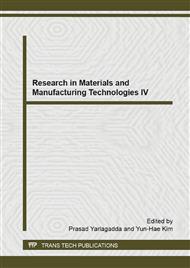p.849
p.854
p.858
p.862
p.866
p.874
p.881
p.889
p.893
Deformation of Hard Disk Drive Media Caused by Thermal Stress and Induced Air Flow
Abstract:
The spindle motor in a hard disk drive spins at a high rotational speed. These rotations generate air flow and thermal stress. Air flow is induced by the surface roughness of the media that is moving at a high speed through air. This air passes over the surface of many parts in the drive, including the media. Thermal stress is generated by heat in the parts, e.g. voice coil motor, pre-amplifier, slider pole tips, which are heated by electric power and by the spinning of the spindle motor. The air flow and thermal stress cause a change in the media shape called deformation.Simulation results show the trend of deformation has more bending when the slider moves outward from the media axis. The pressure acted more on the underside than on the upper side which caused the media to bend up to the top cover side of hard disk drive. The maximum deformation, 15 μm, occurred at the rim of media while the distance between the media and the slider is 30 μm; thus they did not contact each other.
Info:
Periodical:
Pages:
866-873
Citation:
Online since:
December 2014
Authors:
Keywords:
Price:
Сopyright:
© 2015 Trans Tech Publications Ltd. All Rights Reserved
Share:
Citation:


